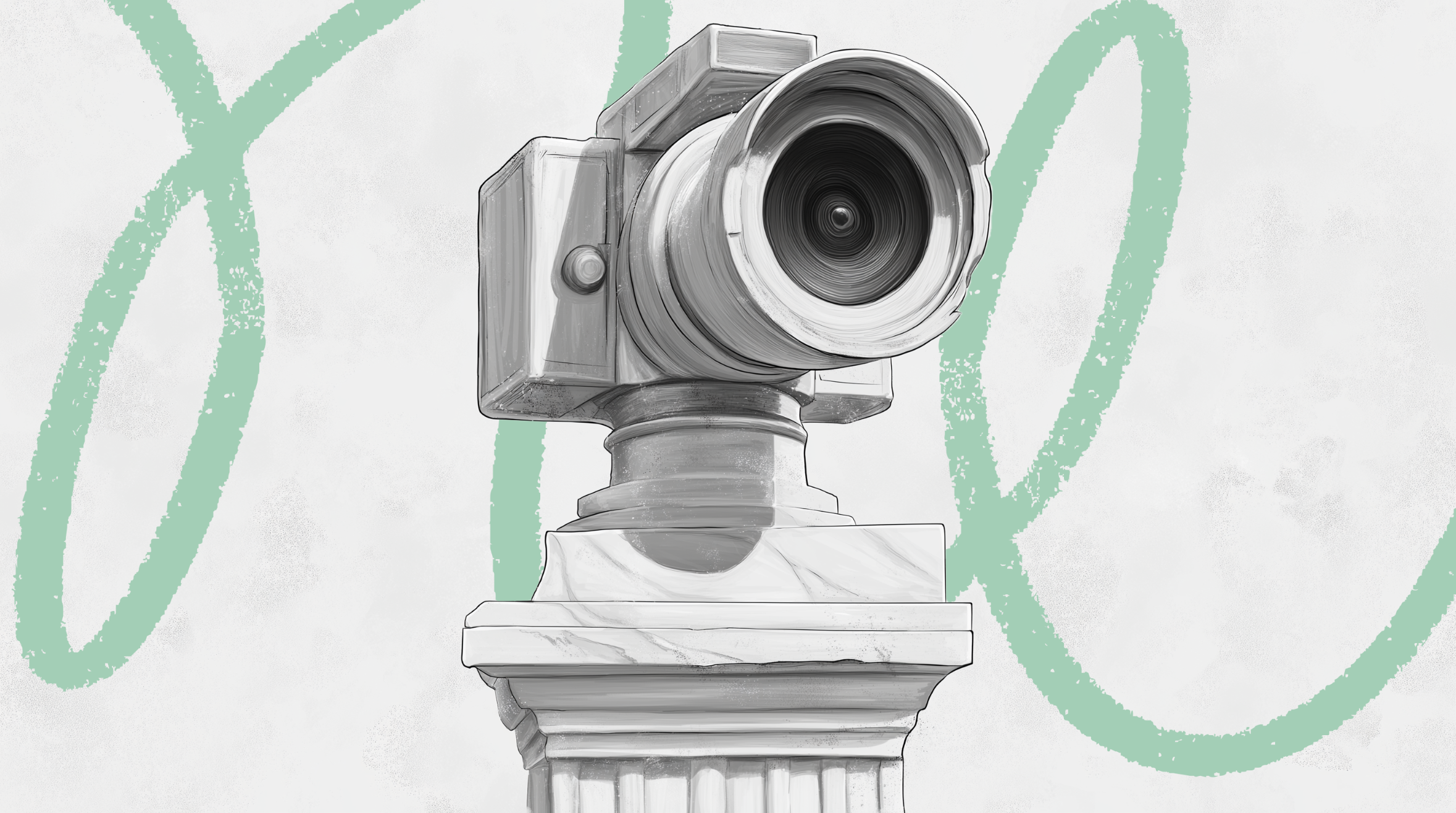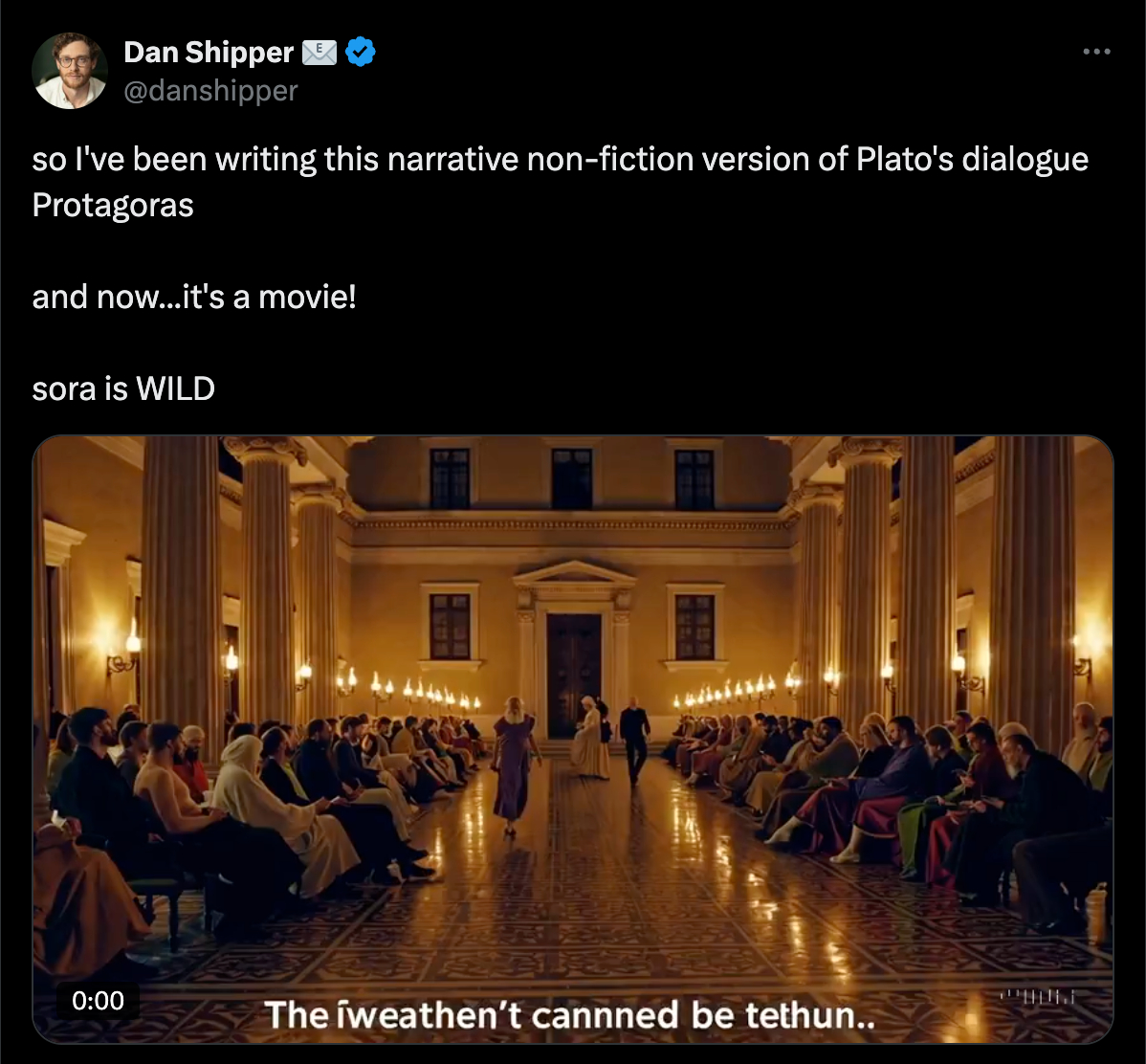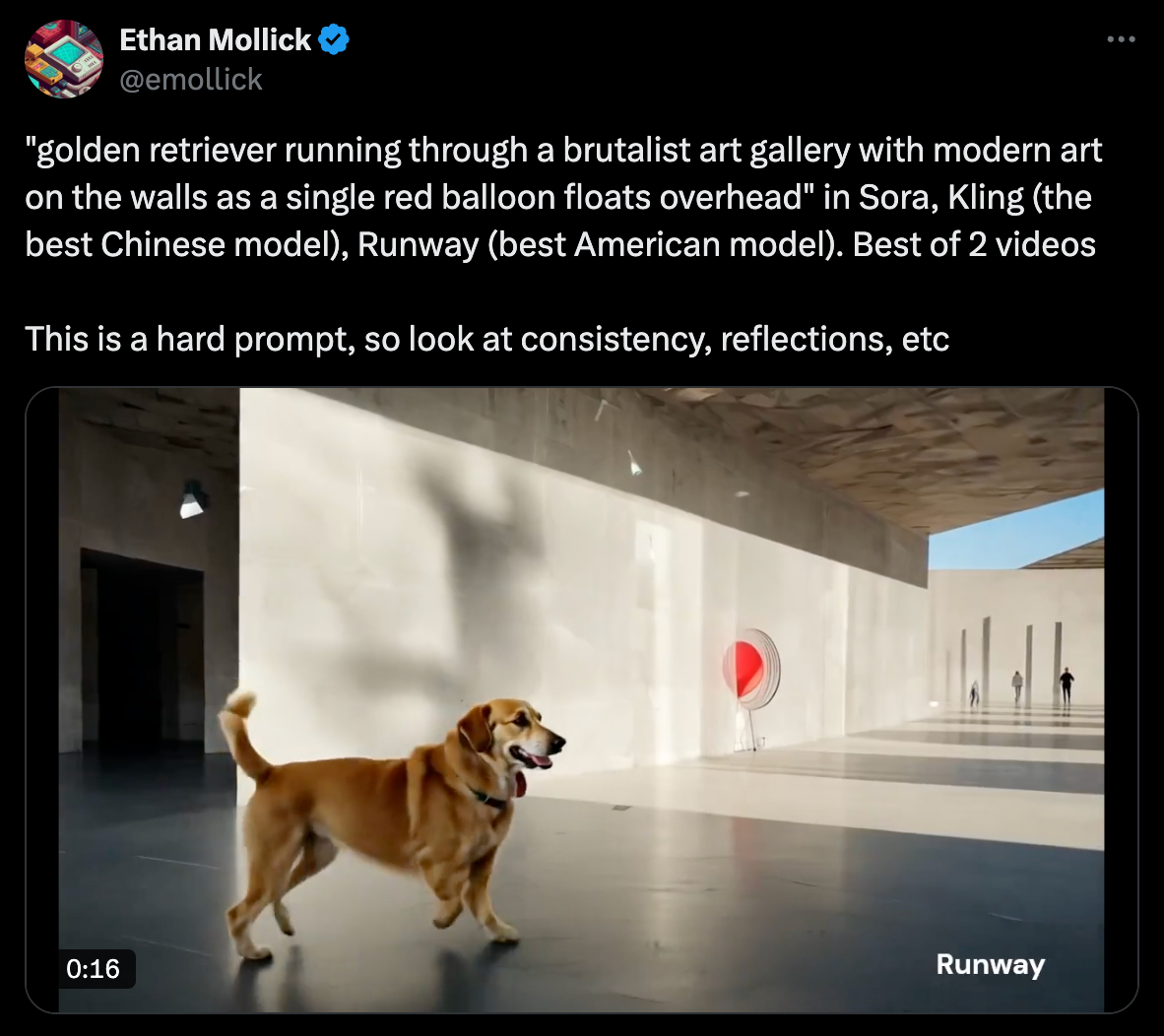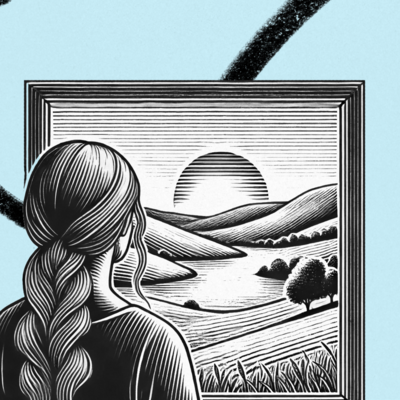
Was this newsletter forwarded to you? Sign up to get it in your inbox.
Yesterday, OpenAI released its long-awaited video model Sora to paying users—with some guardrails.
The company first teased Sora in February, but until now it was only available to a small group of testers. But now, subscribers in select countries can prompt the model, called Sora Turbo, with text, images, and videos in order to generate clips up to 20 seconds in length at 1080p resolution.
Sora isn’t just a video generator, but a full video-editing platform, complete with creative tools. In order to make Sora something special, the company knows it’ll need to compete not only with other AI tools but with legacy video-editing platforms, too.
We did a vibe check with the Every Studio team about their first impressions of Sora and surveyed the tech landscape. Here’s what they think, and what’s new.
How Sora works
What’s new with the Sora Turbo model—beyond being faster and more cost-effective than its predecessor, Sora—are the features that OpenAI has built on top of the video editing interface:
- Remix lets you edit, delete, or transform elements within your video clips.
- Re-cut helps you identify and select the optimal frames, letting you extend them forward or backward to build your scene.
- Blend merges two separate video clips into one unified sequence.
- Presets let you customize and share production styles with co-creators.
- Loop optimizes clips for seamless, continuous playback.
- Storyboard allows you to generate multiple AI videos and arrange them chronologically on a timeline, similar to traditional editing platforms like Adobe Premiere Pro.
And then there’s the social feed: a creative gallery where users can share videos, tweak prompts from featured videos, and co-create with other producers.
A narrative non-fiction reimagining of Protagoras by Plato. Source: X/Dan Shipper.
OpenAI delayed the release of this model for nearly a year in order to ensure it’s not prone to spreading harmful content, such as disinformation. In that regard, there are some limitations: All videos are watermarked, and you cannot use it to generate sexually explicit deepfakes.
“We want to prevent illegal activity of Sora, but we also want to balance that with creative expression,” Sora product lead Rohan Sahai said during the livestream event. “We know that...will be an ongoing challenge, we might not get it perfect on day one.”
Sponsored by: Every
Get the whole package
We write, and then we build. If you’re a fan of Every's writing, you’ll probably like the products we’ve made to make thinkers more efficient: Spiral to automate repeat writing tasks, Lex to help you write better, and Sparkle to clean up your desktop—for good. With our last discount of the year, we're offering the whole package of writing and software for 33% off.
What Everyone at Every is thinking
The Sora rush is happening
“Has anyone else refreshed sora.com 152 times to try to sign-up after missing the window? Just me?” —Alex Duffy, consulting lead and staff writer
Sora isn’t competing with other AI video generation tools—it’s competing with legacy video editing software
“OpenAI is trying to have its ChatGPT moment with video. When they initially launched Sora, I think we all assumed that it would be released as an API—at least at first. That’s been the historical trajectory of all of their products to date. But with Sora, OpenAI opted to build the beginnings of a full end-to-end creative suite for video.”—Dan Shipper, cofounder and CEO
If the creator economy democratized distribution, then the allocation economy is democratizing content production
Margins on everything are gonna go way up [...] The next Avengers will look just as good and cost one ten-thousandth as much to make.”—Brandon Gell, head of Every Studio and consultancy
Commercials will be the first use case to scale
“Ads are the perfect testing ground for AI video because the stakes are low and the volume is high. Coke's doing it now, and it makes sense for industries like pharmaceuticals, where the ads already look AI-generated (even though they aren't). Drop-shipped consumer brands and pop-up CPGs are also a good fit.”—BG
Generative AI videos aren’t a social experience
“Virtual reality hasn't taken off because the viewing experience is single-player. Viewing quality is better, but it's not a social experience anymore. GenAI feels similar—while it's incredibly powerful and lets you create things you'd never be able to do with real footage for a fraction of the cost, you lose that collaborative magic of filmmaking. GenAI will never make a movie like Past Lives, for example.”—BG
Micro-game studios will grow
“AI makes generating in-game assets and elements so much easier that we're about to see an explosion of ‘micro studios’—one- or two-person teams creating games at a scale previously impossible. While tiny studios aren't new (Among Us was built by five people), the barriers are dropping and creative possibilities are expanding in ways we've never seen before.”—AD
What Everyone else is thinking
On video quality
Abstract animations, textures, and cartoon-style vids pass the vibe check, but the physics are off: Object permanence is the primary issue across key frames, realistic human movements are still off-base, and clips tend to default to slow motion.
(Apparently) gymnastics is the AI video Turing Test, and Sora is failing.
On content production
The storyboard feature is a key selling point for professional video producers, who are comparing the tool against their existing video editing software like Adobe.
There’s a lot of excitement around Sora’s discovery interface because of the social aspect of content creation and creative inspiration.
On competition
Sora currently works best as a complement to other AI content generation tools: Spin up a scene on Midjourney, generate a voice on ElevenLabs, and produce your video through Sora.
Sora nails the photorealistic details but can't match Runway, or other AI video generation tools, on fluid motion. It takes multiple re-prompts to capture consistent movement between frames.
Comparing the same prompt across Kling, Sora, and Runway. Source: X/Ethan Mollick (click through for video).The final word
“Maybe that’s why OpenAI went the full end-to-end creative suite route with Sora—it seems the company has learned how important controlling the application layer is. GPT-3 didn’t take off until ChatGPT was released. Will Sora do the same for AI-generated video?”—DS
Aleena Vigoda is a self-taught software creator exploring the social dynamics of consumer apps.
To read more essays like this, subscribe to Every, and follow us on X at @every and on LinkedIn.
We also build AI tools for readers like you. Automate repeat writing with Spiral. Organize files automatically with Sparkle. Write something great with Lex.
Find Out What
Comes Next in Tech.
Start your free trial.
New ideas to help you build the future—in your inbox, every day. Trusted by over 75,000 readers.
SubscribeAlready have an account? Sign in
What's included?
-
Unlimited access to our daily essays by Dan Shipper, Evan Armstrong, and a roster of the best tech writers on the internet
-
Full access to an archive of hundreds of in-depth articles
-
-
Priority access and subscriber-only discounts to courses, events, and more
-
Ad-free experience
-
Access to our Discord community





Comments
Don't have an account? Sign up!
Hey, guys. I'm a paid subscriber but I'm blocked by the paywall in this text. Can you help?
@aiquisrg Solved. You can delete my comment :)